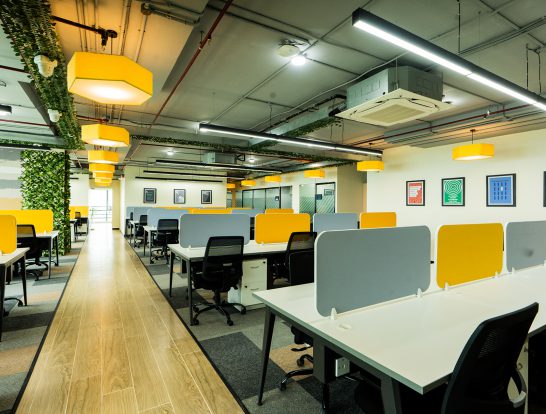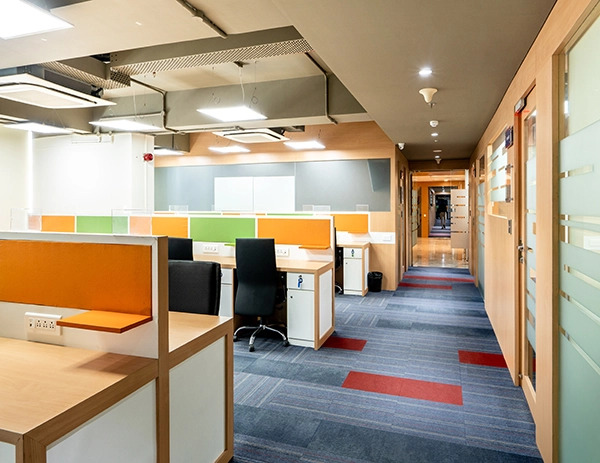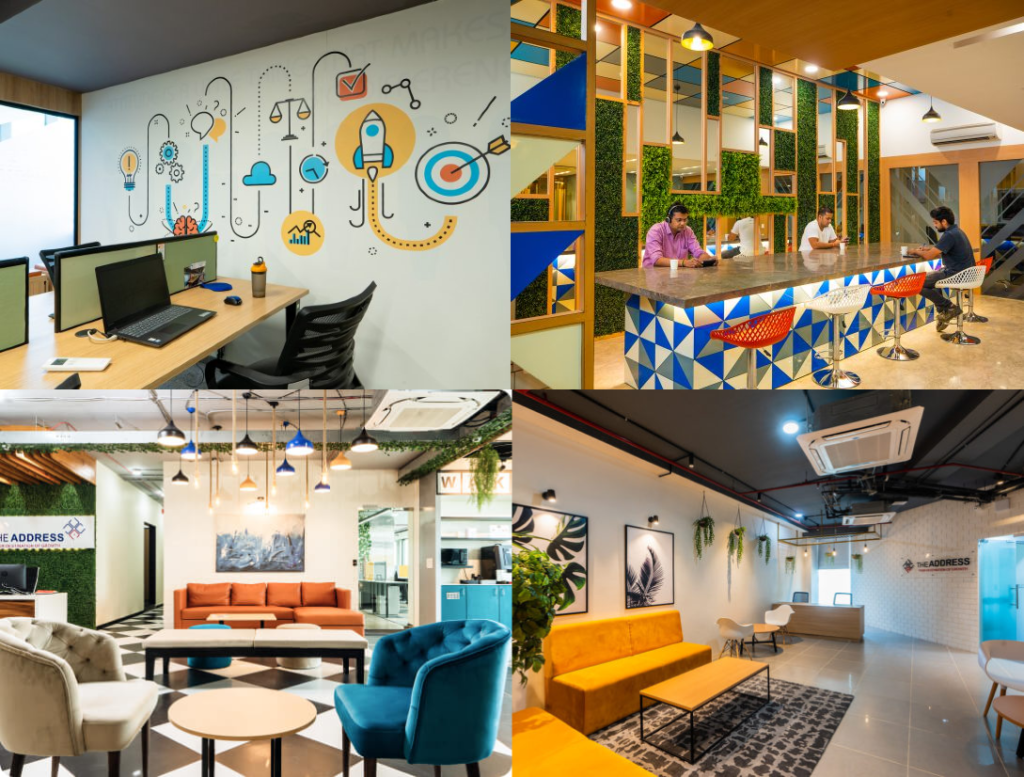Flexible working models and alternate working arrangements, such as shared workspaces are rapidly growing in popularity. Businesses from all over the world have realized the benefits of shared workspaces and how these working offices can help them operate more efficiently while saving money.
This post will serve as the best guide for you to learn everything about shared workspaces.
A shared workspace is an office space in which self-employed individuals, companies, and remote workers come together and work under the same roof. Shared workspaces are popular among freelancers, consultants, gig workers, solopreneurs, teams building satellite offices, work-from-anywhere employees, and anyone else who does not have a dedicated office space.

Shared workspace offers businesses and individuals fully-functional office spaces with ergonomic furniture, modern tech amenities, and a conducive work environment thereby reducing the operational costs of setting up new offices from scratch. It brings together diverse professionals from various backgrounds and forms a community that motivates one another to perform to the best of their abilities.
Now, let us learn more about the different types of shared workspaces you can consider for setting up your office.
This type of shared workspace is designed to promote collaborative working among professionals. Coworking spaces are the best examples of such physically collaborative shared workspaces as they offer open offices to ensure seamless communication and collaboration. These are ideal for businesses that wish to have a dedicated office space.
This type of shared workspace is shared by multiple professionals and is the most flexible in terms of usage. To promote maximum occupancy, these spaces offer flexible desk booking arrangements allowing professionals to book a shared desk as per their requirements. This type of shared space is ideal for remote employees, freelancers, and solopreneurs.
This type of shared workspace includes virtual environments and tools that help professionals to collaborate virtually in real-time. The best examples of these workspaces are virtual meetings, interactive whiteboards, and more.
This type of workspace is often a digital environment that helps professionals to share information with their colleagues. Google Drive, OneDrive, and Dropbox are some of the common examples of this type of shared workspace.
Shared workspaces offer a multitude of benefits in terms of collaboration, communication, and connection building. Let us quickly have a look at each of them.
Being situated in prime locations, shared offices are equipped with the state of the art facilities to offer a vibrant and motivating work environment. You will gain access to modern workplace amenities, such as well-stocked kitchens, phone booths, projectors, sound systems, and more.
Further, shared offices have a dedicated staff that looks after the upkeep and maintenance of the spaces allowing you to focus your time on important work.
Shared office spaces offer far greater value for money as compared to traditional offices. If you are a new startup or an established business wanting to scale its operations, shared offices will offer you a much cheaper solution than renting out a permanent office. You pay only for the space and facilities you need in the form of monthly rental fees. Shared offices do not require you to sign lengthy lease contracts or any other documents.
One of the reasons why shared workplaces are popular among growing teams is the flexibility it offers. You can book additional workstations or private offices as your company workforce grows without any hassles.
Shared workplaces offer you immense opportunities to meet, converse, and collaborate with your colleagues and complete the assigned tasks on time. Further, it introduces you to other coworking professionals, such as CEOs, graphic designers, content writers, social media experts, and more who could bring in more business opportunities.
Being surrounded by like-minded individuals will help you stay motivated and energized to complete your tasks throughout the day. It will eliminate various distractions like work-from-home distractions allowing you to focus complete attention on your tasks. Besides, the professional work environment of these office spaces will help you work efficiently while delivering quality results.
Although shared workspaces offer numerous benefits, it does have a few shortcomings.

The difference between shared workspaces and coworking spaces can be confusing especially because both these spaces provide members with similar working experiences.
Shared workspaces, being more business-focused, are leveraged by corporates, large-sized companies, and enterprises for setting up their offices. On the other hand, coworking spaces are often targeted at freelancers, remote workers, startups, and small businesses. However, many shared workspaces do offer coworking solutions to their members.
Shared workspaces offer more privacy as compared to coworking spaces that are designed in a way to promote social networking and collaboration.
Shared workspaces often have fixed opening and closing timings. However, coworking spaces are likely to be open 24*7 offering members to come and work at their convenience.
The layout of workstations in shared workspaces often depends on the company’s requirements. But, coworking spaces follow an open-plan concept.
Shared offices are often like traditional offices offering services, such as reception services, kitchen, mail management, and more. The services offered by coworking spaces are completely different. It often includes free coffee, meeting rooms, conference rooms, and more that can be used by paying some additional fees.
Shared workspaces, being more business-focused, often host events that are great for finding clients, project collaborations, and more. Coworking spaces focus on social and fun events to connect with like-minded professionals, share ideas, and wind off for the week.
If you are looking for a shared workplace, we have the best suggestion for you. The Address offers premium shared workspaces having aesthetically-designed interiors and top-notch amenities to help you set up and scale your business. Whether you are a solopreneur or a startup, a freelancer, or an SME, The Address has a place for everyone. No wonder, the latest coworking statistics suggest that The Address has become India’s fastest-growing coworking firm.
With shared workspaces in Ahmedabad, Surat, Vadodara, and Indore, The Address is slowly spreading its wings to other top cities of India, such as Noida, Pune, Mumbai, Nasik, Kochi, and Hyderabad. Call us today to learn more about the shared workspaces we have to offer.

Shared workspace is commonly referred to as collaborative workspace, coworking space, flexible office space, temporary office space, satellite office space, and more.
Shared workspaces are being utilized by everyone – freelancers, digital nomads, solopreneurs, entrepreneurs, startups, SMEs, consultants, remote teams, work-from-anywhere employees, and enterprises.
Probably. It depends on your business requirements and company goals.
Here are a few signs that you might need a shared workspace.
As shared workspaces are being used by various professionals, you need to consider both your comfort and that of your coworkers.
What are the best locations for Coworking Space In India

